Struggling to find a versatile bottling solution? You want one machine for all your needs, but fear making a costly mistake.
The answer is no. A single semi-automatic blow molding machine cannot efficiently produce all bottle sizes. The machine's fixed design for stroke, heating, and clamping means using it outside its optimal range leads to low efficiency, wasted energy, and poor bottle quality.
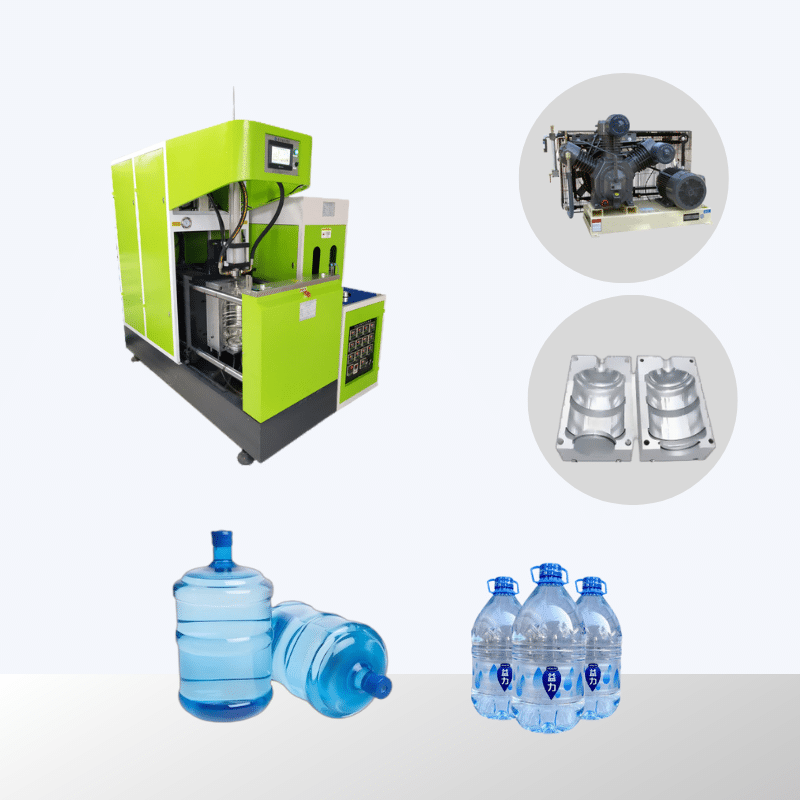
I often get this question from new businesses. They want to maximize their investment by buying one large machine to handle every bottle they can imagine. It seems logical on the surface. But in practice, this approach almost always backfires. Let's break down exactly why a specialized approach is not just better, but essential for a successful production line. This guide will walk you through the technical reasons and help you make a smarter choice.
Why Does This Question Matter: What Do Customers Usually Assume?
Starting a new factory is tough, especially with a tight budget. You think buying one large machine to make all bottle sizes is a smart way to save money.
This assumption is a common but costly myth. The reality is that a "one-size-fits-all" approach leads to higher operational costs, terrible production efficiency, and a final product that doesn't meet quality standards. It's a recipe for failure.
The "One Machine to Rule Them All" Myth
When you're launching a beverage or packaging company, every dollar counts. The idea of purchasing a single, large bottle blowing machine that can produce everything from a small 250ml juice bottle to a large 5L water jug seems incredibly appealing. The perceived benefits are clear:
- Lower Initial Investment: One machine costs less than two or three.
- Less Space Required: A single machine takes up less floor space in your factory.
- Simplified Operations: You only need to train your team on one piece of equipment.
This logic is what leads many entrepreneurs to ask me, "Can I just buy your 5L machine to make my 500ml bottles too?" They see it as a clever shortcut. However, the technical realities of the blow molding process make this a very poor strategy. The belief that larger capacity automatically includes smaller capacity is a fundamental misunderstanding of how these machines are engineered. They are not like a big truck that can carry a small box. Instead, they are highly specialized tools designed for a specific range of tasks. Using them outside that range doesn't just work poorly; it actively creates problems. The mismatch in design parameters leads to a cascade of issues that ultimately cost you more money than you tried to save.
Is the Blow Molding Stroke Fixed and a Poor Fit for All Bottle Heights?
You have a 10-liter bottle mold and a 500ml bottle mold. You assume your big machine's stretching rod can simply adjust to both.
This is incorrect. Every machine has a maximum stretching stroke. A machine built for tall 10L bottles has a long stroke that will punch through a short 500ml preform, while a small machine's stroke cannot stretch a 10L preform enough.

Understanding the Stretch Rod Mechanism
At the heart of a PET bottle blowing machine is the stretch-blowing process. This involves two steps: the preform is heated, and then a high-pressure stretching rod pushes down into it, stretching it vertically. Simultaneously, high-pressure air is blown in, expanding the preform horizontally to fit the shape of the blow bottle mold. The journey of this stretching rod is called the "stretching stroke."
This stroke is a fixed mechanical parameter determined by the machine's design. A machine designed for large bottles (e.g., 5L to 10L) has a long cylinder and rod to accommodate the significant height of large preforms.
Let's look at what happens when you mismatch the bottle and machine:
- Using a Large Machine for a Small Bottle: Imagine a machine designed for a 400mm tall bottle. Its stroke is built for that length. If you put in a preform for a 150mm tall bottle, the long stretch rod will travel too far. It won't just stretch the preform; it will literally try to punch through the bottom of it, resulting in a failed bottle and potential damage.
- Using a Small Machine for a Large Bottle: Conversely, a machine built for 500ml bottles might have a maximum stroke of 200mm. If you try to produce a 5L bottle that requires 350mm of stretching, the rod simply can't reach far enough. The plastic won't be stretched adequately, leading to a thick, unstretched blob at the bottom and extremely thin, weak walls at the top.
Here is a table illustrating typical stroke requirements, showing why one machine can't cover the entire range.
| Bottle Volume | Typical Bottle Height | Required Stretching Stroke | Machine Compatibility |
|---|---|---|---|
| 500 ml | 200-240 mm | ~180 mm | Small Machine (0-3L) |
| 2 Liters | 300-340 mm | ~280 mm | Small Machine (0-3L) |
| 5 Liters | 340-380 mm | ~320 mm | Medium Machine (3-7L) |
| 10 Liters | 400-450 mm | ~380 mm | Large Machine (5-10L) |
| 20 Liters | 480-520 mm | ~450 mm | Extra-Large Machine (10-20L) |
As you can see, the required stroke varies dramatically. There is no single mechanical setup that can efficiently and correctly handle the vast difference between a 180mm stroke and a 450mm stroke. This is the first major mechanical reason why the "one machine" theory fails.
Must the Heating Zone Length Match the Preform Size?
You have different preforms for small and large bottles. You think the machine's oven can just heat them all the same way.
This is a dangerous assumption. A large machine has a long heating oven for long preforms. Putting a short preform in this oven will overheat and deform it, wasting energy and causing production nightmares.
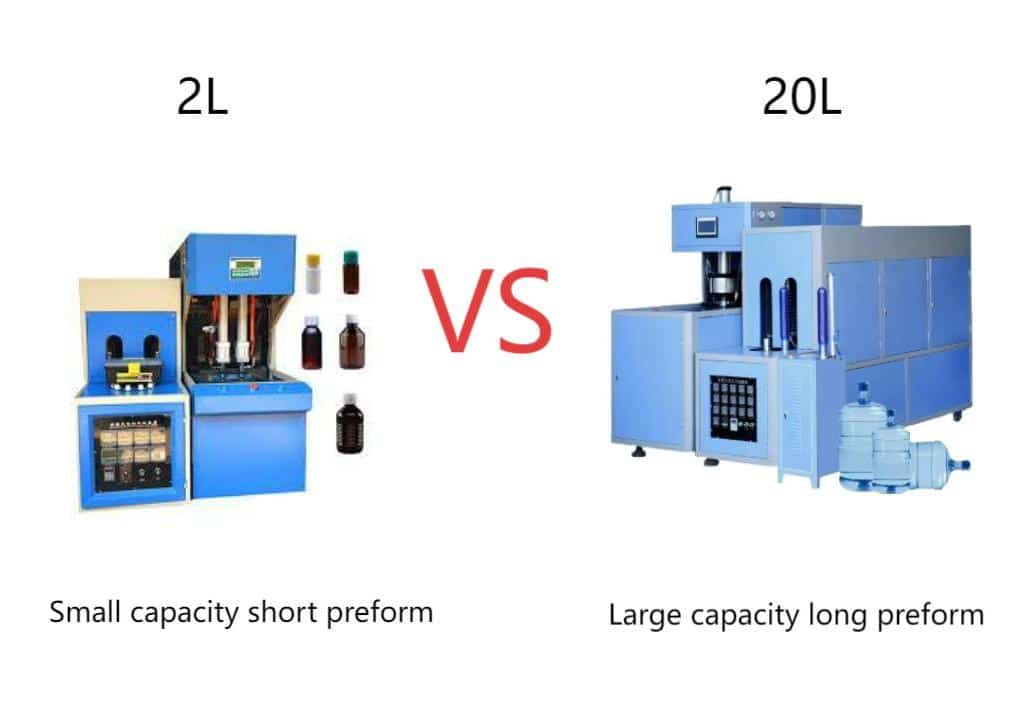
The Science of Preform Heating
Heating is the most critical stage in PET blow molding. The goal is to bring the PET preform to its ideal glass transition temperature (typically around 100-110°C), where it becomes soft and pliable like rubber, but not molten. This heating must be perfectly uniform. An unevenly heated preform will blow into a bottle with inconsistent wall thickness, weak spots, and visual defects.
To achieve this, semi-automatic machines use a heating oven with multiple zones of infrared lamps. The length of this oven is directly proportional to the size of the bottles it's designed for.
- Large Bottles (10-20L): Require very long and heavy preforms. A long heating oven is necessary to give these preforms enough "soak time" to heat all the way through to the core without burning the surface.
- Small Bottles (500ml): Use short, lightweight preforms. They require a much shorter heating zone to bring them to temperature quickly and efficiently.
The problem arises when you put a short preform into a long oven. The preform for a 500ml bottle might be only 100mm long. A machine built for 20L drums might have a heating zone that is 800mm long. The small preform will be exposed to excessive heat for too long. This leads to several issues:
- Overheating and Crystallization: The outer surface of the preform gets too hot, causing the PET material to turn white and brittle (crystallize). This makes it impossible to blow a clear, strong bottle.
- Deformation: The neck finish (the threaded part) is not supposed to be heated. In a mismatched oven, heat can creep up and soften the neck, causing it to deform and preventing the cap from sealing properly.
- Massive Energy Waste: You are running a large bank of heating lamps to heat a tiny object. Most of the infrared energy is simply heating the empty space in the oven, leading to a ridiculously high electricity bill for the output you're getting.
Adjusting the lamps can only do so much. You can turn some lamps off, but the overall length and reflective properties of the oven are fixed. It’s like trying to toast a single slice of bread in a giant pizza oven—it’s inefficient and you’re likely to burn it.
Do Clamping Force and Mold Size Have to Be Matched?
You have a big, powerful machine. You think it can handle any blow bottle mold, big or small. Why would size matter?
A large machine is built with a massive clamping unit to hold a heavy 10L mold shut against high blowing pressure. Using it for a small, light 500ml mold is a huge waste of capacity and space, slowing everything down.
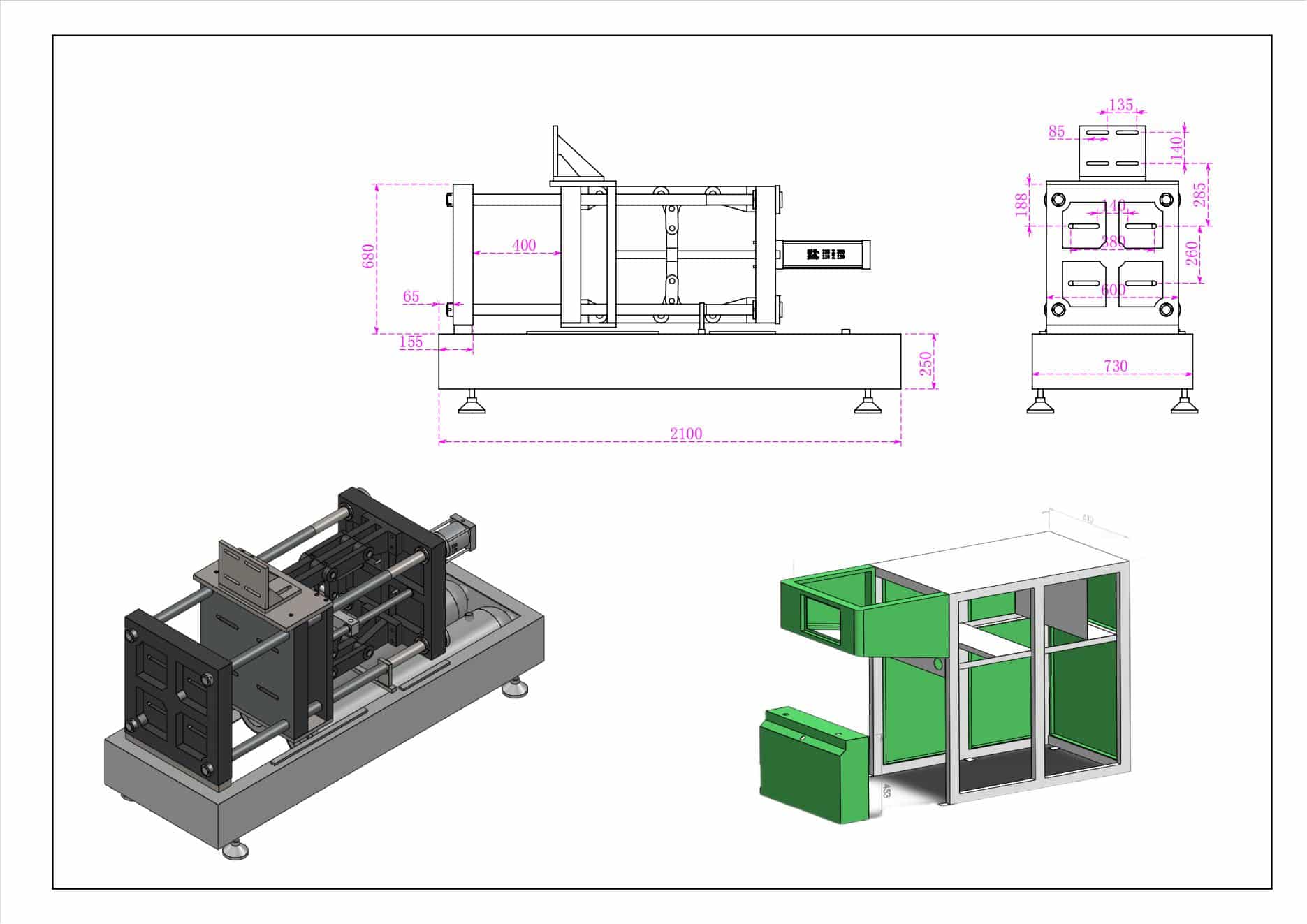
The Job of the Clamping Unit
The clamping unit is the muscle of the bottle blowing machine. Its job is to perform three crucial actions:
- Close the Mold: Bring the two halves of the mold together around the heated preform.
- Clamp Shut: Hold the mold halves together with immense force. This is critical to resist the high-pressure air (up to 40 bar or 580 PSI) that is injected to form the bottle. If the clamp is too weak, the mold will flash, blowing open and creating a dangerous situation and a defective product.
- Open the Mold: Open to eject the finished bottle.
The size and weight of the mold directly dictate how strong this clamping unit needs to be. A blow bottle mold for a 20L water drum can weigh over 500 kg. A mold for a 500ml bottle might weigh only 50 kg.
Why Mismatching Is a Problem:
A machine designed for large, heavy molds has a correspondingly large and powerful clamping structure. This includes a large platen (the steel plates that hold the mold), a wide distance between the tie bars, and a powerful hydraulic or pneumatic system to generate clamping force.
When you install a small 500ml two-cavity mold into a machine designed for a giant 20L single-cavity mold, you run into several inefficiencies:
- Wasted Space: The small mold will look lost inside the huge platen area. This extra space doesn't provide any benefit.
- Slower Cycle Times: The massive platens of a large machine have more mass and travel a longer distance to open and close. This takes more time than the quick, short movements of a smaller machine, adding unnecessary seconds to every single cycle.
- Structural Overkill: You are using a system designed to generate tons of clamping force for a mold that only requires a fraction of it. This is mechanically inefficient and contributes to higher energy use.
Think of it like using a giant industrial crane to lift a box of groceries. It will do the job, but it’s incredibly slow, clumsy, and an enormous waste of the crane's power and potential. The machine's size, power, and speed are all engineered to match a specific mold class.
Do Air, Water, and Power Consumption Scale with Size?
You figure you'll just run the big machine at a lower setting for small bottles. You assume the energy use will be about the same.
This is a critical miscalculation. A large machine’s auxiliary systems—the air compressor and water chiller—are sized for heavy-duty work. They run inefficiently at low loads, consuming far more energy than a smaller, properly sized system.
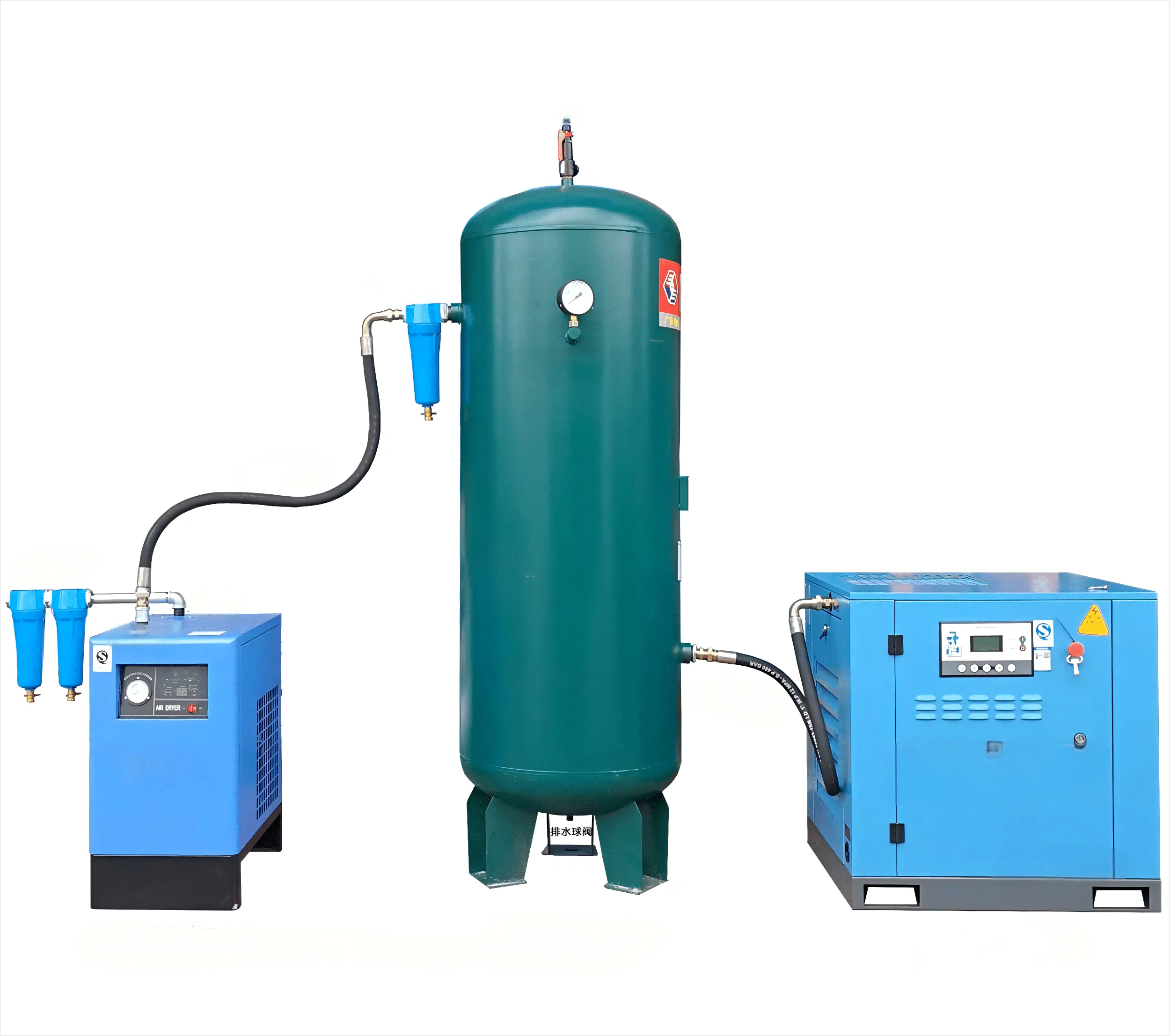
The Hidden Costs of Operation
The bottle blowing machine itself is only one part of the equation. To operate, it needs a support system of auxiliary equipment, primarily:
- High-Pressure Air Compressor: This provides the air (up to 40 bar) that inflates the bottle. The volume of air required is directly related to the volume of the bottle. A 10L bottle needs vastly more compressed air than a 250ml bottle.
- Water Chiller: This circulates cold water through the blow bottle mold to rapidly cool the plastic after it's blown. This quick cooling is essential to solidify the bottle shape and achieve fast cycle times. A larger mold has more mass and requires a more powerful chiller to remove the heat.
When you buy a large machine, say for 10L bottles, you must also invest in a large air compressor and a large water chiller to support it. These are not small expenses; they are major industrial machines that consume a lot of electricity.
The Inefficiency of Mismatching:
Now, let's say you use this large setup to produce small 500ml bottles.
- Air Compressor Inefficiency: Your large compressor is designed to fill a 10L bottle in a few seconds. To fill a 500ml bottle, it only needs to run for a fraction of that time. However, the large motor still runs, and the system still has to maintain high pressure, using much more power per bottle than a small, dedicated compressor would. It's like flooring the gas pedal on a V8 engine for one second to move a car one foot.
- Chiller Inefficiency: Your powerful chiller is designed to cool a massive 300kg mold. When connected to a small 50kg mold, it will run in short, inefficient bursts, or it will simply run constantly at a fraction of its capacity, which is also highly inefficient for most industrial chiller designs.
- Machine Power Draw: The large motors that drive the clamping unit and other systems on the big machine consume more baseline power, even when performing a smaller task.
These combined inefficiencies mean your cost-per-bottle skyrockets. The money you thought you were saving on the initial purchase is quickly eaten up by exorbitant monthly electricity bills. True efficiency comes from matching every component of the system—the machine, the compressor, and the chiller—to the specific job at hand.
Will You Sacrifice Production Speed and Changeover Time?
You know the big machine might be slower, but how much difference can it really make? A few seconds per bottle can't be that bad.
It's a massive difference. A dedicated small bottle machine can produce 4-5 times more bottles per day than a large machine doing the same job. The slow cycle and complex changeovers will destroy your productivity.
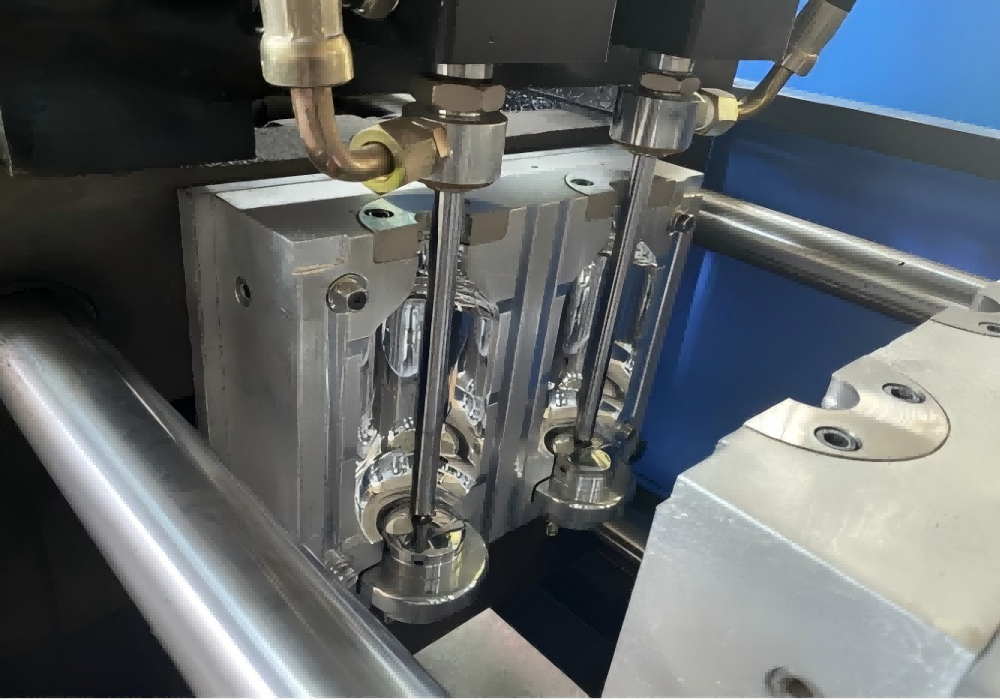
The Devastating Impact of Slow Cycle Times
This is where the "one machine" strategy completely falls apart, and it’s a lesson one of my clients learned the hard way. I want to share his story because it perfectly illustrates this point.
A few years ago, a new client from Bangladesh came to me. He was just starting out and had a limited budget. His product line included both 250ml and 5L bottles. I strongly recommended that he purchase two separate semi-automatic machines: a small, fast 2-cavity machine for the 250ml bottles, and a single-cavity 5L machine. I even designed a compressed air system that could efficiently run both.
He refused. He said my plan was too expensive. He found another supplier who told him what he wanted to hear: "One 5L bottle blowing machine can make all your bottles. It's the best solution."
Three months later, my phone rang. It was the client from Bangladesh. He apologized profusely. His decision had been a disaster.
- Extremely Low Output: Using his single-cavity 5L machine, he was only able to produce about 280 of his 250ml bottles per hour. The machine's long, slow clamping movement and inefficient heating meant the cycle time was painfully long.
- Sky-High Costs: His electricity bills were shocking. The energy consumed to produce those 280 tiny bottles was enormous.
- Difficult Changeovers: Swapping from the 5L blow bottle mold to the 250ml mold was a nightmare. He had to adjust the heating lamps, change machine settings, and reposition everything. It took hours.
He told me, "The money I lost in wasted electricity and labor over those three months could have paid for the second machine you recommended." He immediately placed an order for the 3L 2-cavity machine. Today, three years later, we have a fantastic partnership. He trusts my advice because he has lived the consequences of making the wrong choice.
Let's look at the numbers.
| Feature | Large Machine (5L) making 250ml | Small Machine (3L) making 250ml |
|---|---|---|
| Cavities | 1 | 2 |
| Cycle Time | ~13 seconds | ~7 seconds |
| Bottles per Hour | ~280 | ~1000 |
| Output in 8-hr Shift | ~2,240 bottles | ~8,000 bottles |
The dedicated machine produces nearly four times as many bottles. The loss in production is not a small detail; it's the difference between a profitable business and a failing one.
What Are the Recommended Machine Ranges Based on Bottle Volume?
Okay, I understand one machine isn't the answer. So how do I choose the right one? What are the standard machine categories?
The key is to match the machine's design to your bottle volume. We break it down into four main categories, each optimized for a specific size range, ensuring you get the best performance, speed, and efficiency.
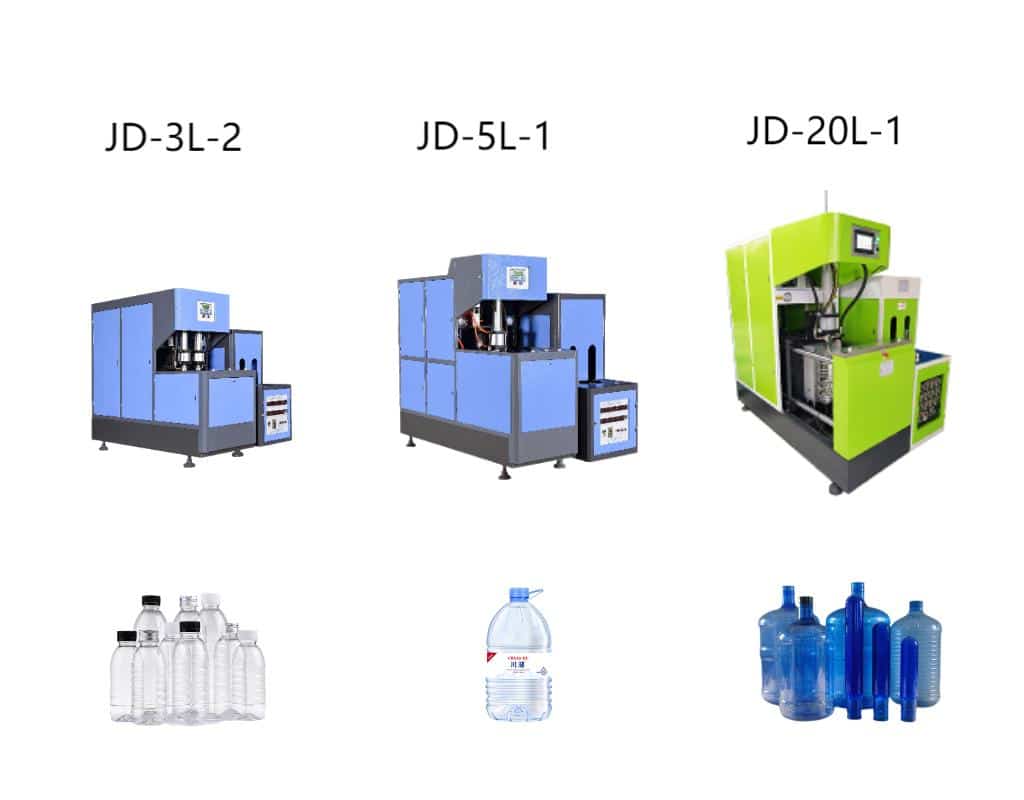
A Clear Guide to Machine Selection
Choosing the right machine doesn't have to be complicated once you abandon the "one-size-fits-all" idea. The industry has developed specialized machines whose stroke, heating oven, and clamping unit are all optimized for a specific range of bottle volumes. This ensures that every component is working in harmony for maximum efficiency.
I always guide my clients using the following breakdown. It's a reliable framework for matching your product to the right equipment. Whether you are making tiny 50ml vials or massive 20L water cooler jugs, there is a machine built specifically for that job. Investing in the right tool from the start saves you countless headaches and expenses down the road. It ensures that your production line runs smoothly and that the quality of your bottles is consistently high. Analyzing your primary bottle sizes and future needs against this chart is the first step toward building a robust and profitable production facility.
Here is a detailed table that you can use as a reference. It outlines the standard machine types and their ideal applications.
| Bottle Volume Range | Recommended Machine Type | Key Features & Specifications | Ideal For |
|---|---|---|---|
| 50ml – 3L | Standard Semi-Automatic | Configuration: 2-Cavity or 1-Cavity Stroke: Short and fast Heating: Compact oven for short preforms Speed: Optimized for high-speed production | Small water bottles, juice, cosmetics, pharmaceuticals. High-volume production. |
| 3L – 5L | Strengthened Single-Cavity | Configuration: 1-Cavity Clamping: Larger platen, reinforced clamping Stroke: Medium-length stroke Air System: Requires more air volume | Edible oil jugs, medium-sized water bottles, cleaning supplies. |
| 5L – 10L | Large-Format Single-Cavity | Configuration: 1-Cavity Heating: Extended oven for longer preforms Stroke: Long stretching stroke Structure: Heavy-duty frame and components | Large water jugs, bulk chemical containers, wide-mouth jars. |
| 10L – 20L | Specialized Barrel Machine | Configuration: 1-Cavity Customization: Fully customized structure Mold Handling: Engineered for very heavy molds Cylinder: Reinforced stretching cylinder | Water cooler drums, large industrial barrels, specialty large-format containers. |
This table clearly shows that the machine's design changes significantly as the bottle volume increases. A "Standard" machine is built for speed, while a "Specialized Barrel Machine" is built for power and handling immense weight. You cannot expect one to do the other's job well.
How Do We Help You Choose the Right Machine for Your Bottle Line?
This is a lot of technical information. I'm not an engineer, so how can I be sure I'm making the right choice for my specific bottles?
You don't have to be an expert, because I am. We provide a complete analysis of your needs, from your bottle drawings to your production goals, ensuring the machine you buy is a perfect fit, saving you from costly mistakes.
A Partnership for Success
My goal is not just to sell you a machine. My goal is to help you build a successful and profitable business. That's why I've built my process around a consultative approach. I see myself as your partner, using my years of experience to guide you to the best possible solution. The story of my client from Bangladesh is a perfect example of why this guidance is so crucial. A bad initial decision can set a business back months and cost a fortune. A good decision lays the foundation for growth.
Here is the step-by-step process we use to ensure you get the perfect equipment for your production line:
- Bottle Drawing Analysis: It all starts with your product. You provide us with the design drawings or samples of the bottles you want to produce. We analyze the volume, height, neck finish, and overall shape. This tells us the basic parameters we need to meet.
- Stretching Ratio and Stroke Evaluation: Based on your bottle height, we calculate the required stretching stroke and the ideal stretching ratio. This is a critical calculation that determines which machine class (e.g., 0-3L, 3-5L, etc.) is the correct technical fit. We also evaluate the preform design, sometimes suggesting a better preform from a preform mold to improve the blowing process.
- Mold and Auxiliary Recommendation: Once we identify the right machine, we don't stop there. We advise on the optimal blow bottle mold configuration (e.g., number of cavities) to meet your output targets. We then calculate the exact requirements for the supporting equipment, providing a full specification for the right high-pressure air compressor and water chiller.
- A Complete, Optimized Solution: The final result is a proposal for a complete, integrated system where every component is perfectly matched. This guarantees that your line will run at peak efficiency, produce high-quality bottles, and keep your operational costs low.
By working together, we can avoid the common pitfalls and set you up for success from day one. My job is to take the guesswork out of the equation and give you the confidence that your investment is sound.
Conclusion
In short, one machine cannot do it all. Choosing the right semi-automatic blow molding machine based on your specific bottle size is crucial for efficiency, quality, and profitability.
Frequently Asked Questions (FAQ)
1. What is the main financial risk of using one large machine for all bottle sizes?
The biggest financial risk is extremely high operational cost. Your electricity bill will be massive because the large machine's motors, heaters, and required large-scale air compressor consume far more energy than necessary to produce a small bottle. This inefficiency eats directly into your profit margins on every bottle you produce.
2. Can I modify a large machine to make small bottles more efficiently?
No, not effectively. While you can turn off some heating lamps or try to adjust settings, you cannot change the machine's core mechanical structure. The long stretching stroke, the large distance the heavy clamp has to move, and the oversized auxiliary equipment are all fixed. These fundamental design aspects will always make it inefficient for small bottles.
3. How much faster is a dedicated small bottle machine compared to using a large one?
A dedicated small bottle machine is significantly faster. As shown in the case study, a 2-cavity machine designed for small bottles can produce around 1000 bottles per hour, while a large single-cavity machine might only produce 280 of the same bottle. That means the correctly sized machine can be 3 to 5 times more productive.
4. What information do I need to provide to get a good machine recommendation?
To get the most accurate recommendation, you should provide:
- Bottle Drawings or Samples: For all the bottle sizes you plan to produce.
- Target Production Output: How many bottles of each type you need to produce per hour or per day.
- Material Type: Usually PET, but it's important to confirm.
- Factory Utilities: Information about your available power supply (Voltage, Phase, Hz).
5. Is it better to start with one machine and add another later, or buy two from the start if I have very different bottle sizes?
If your budget allows, it is almost always better to buy two properly sized machines from the start if you have a wide range of bottle sizes (e.g., 500ml and 5L). The immediate gains in production speed, efficiency, and lower running costs on the small bottle machine will typically provide a faster return on investment than the money "saved" by trying to make one machine work for everything.
🔗 Learn More about Blow Molding Technology
To better understand the core components of a 6-cavity automatic blow molding machine, here are some useful resources:
Blow Molding – Wikipedia
A comprehensive overview of various blow molding processes, including extrusion, injection, and stretch blow molding.Injection Molding – Wikipedia
Important for understanding the production of preforms used in stretch blow molding.Stretch Blow Molding – Wikipedia
Explains how PET bottles are formed through axial and radial stretching processes.PET Bottle – Wikipedia
Background information on the materials and properties of typical PET bottles.Design of PET Bottles – Wikipedia
An introduction to the design considerations and geometry used in PET bottle manufacturing.
🔗 Related Pages on Our Website
Automatic Blow Molding Machines – iBottler
Discover our full range of customizable automatic PET bottle blow molding machines.Blow Bottle Mold – iBottler
Explore our precision blow molds designed for PET and PP bottles.Preform Mold – iBottler
Learn more about our high-precision preform molds suitable for various injection molding machines.
